
The 452nd Air Mobility Wing is an Air Reserve Component of the United States Air Force. It is assigned to the Fourth Air Force, Air Force Reserve Command, stationed at March Air Reserve Base, California. If mobilized, the Wing is gained by the Air Mobility Command.
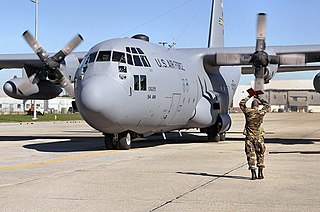
The 94th Airlift Wing is a reserve unit of the United States Air Force. It is assigned to the Twenty-Second Air Force of the Air Force Reserve Command (AFRC) and is stationed at Dobbins Air Reserve Base, Georgia. When mobilized, most of the wing would be presented to US Transportation Command, while a smaller proportion would be retained by AFRC.
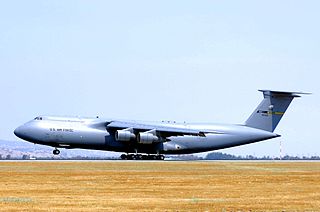
The 349th Air Mobility Wing is an Air Reserve Component of the United States Air Force. It is assigned to the Fourth Air Force, Air Force Reserve Command, stationed at Travis Air Force Base, California. The 349th AMW is an associate unit of the 60th Air Mobility Wing, Air Mobility Command (AMC) and if mobilized the wing is gained by AMC.

The 482nd Fighter Wing is an Air Reserve Component (ARC) unit of the United States Air Force. It is assigned to the Tenth Air Force, Air Force Reserve Command (AFRC), stationed at Homestead Air Reserve Base, Florida. If mobilized to active duty, the 482 FW is operationally gained by the Air Combat Command (ACC).

The 700th Airlift Squadron is part of the 94th Airlift Wing at Dobbins Air Reserve Base, Georgia. It operates Lockheed C-130 Hercules aircraft providing global airlift.

The 701st Airlift Squadron is part of the 315th Airlift Wing at Charleston Air Force Base, South Carolina. It operates Boeing C-17 Globemaster III aircraft providing global airlift.

The 731st Airlift Squadron is a flying unit of the United States Air Force assigned to the Air Force Reserve Command and part of the 302d Airlift Wing at Peterson Air Force Base, Colorado. It operates Lockheed C-130H Hercules aircraft providing global airlift. The squadron also has the specialized mission of Modular Airborne Fire Fighting System.

The 482d Operations Group is a United States Air Force Reserve unit assigned to the 482d Fighter Wing. It is stationed at Homestead Air Reserve Base, Florida.

The 448th Supply Chain Management Group is an inactive United States Air Force unit. Its last assignment was to the 448th Supply Chain Management Wing at Tinker Air Force Base, Texas, where it was inactivated on 30 June 2010.

The 319th Operations Group is a United States Air Force unit assigned to 319th Reconnaissance Wing, Air Combat Command. It is stationed at Grand Forks Air Force Base, North Dakota operating RQ-4 Global Hawk remotely piloted aircraft (RPA) in the intelligence, surveillance and reconnaissance (ISR) role.

The 46th Bomb Squadron is an inactive United States Air Force unit. It was last assigned to the 319th Operations Group at Grand Forks Air Force Base, North Dakota, where it was inactivated on 16 July 1994.
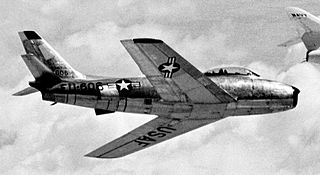
The 812th Fighter-Bomber Squadron is an inactive United States Air Force unit. Its last assignment was with 482d Fighter-Bomber Group stationed at Dobbins Air Force Base, Georgia.
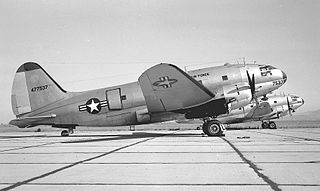
The 814th Troop Carrier Squadron is an inactive United States Air Force unit. Its last assignment was with 482d Troop Carrier Group stationed at Miami International Airport, Florida.

The 702d Expeditionary Airlift Squadron is a provisional United States Air Force unit. It is assigned to Air Combat Command to activate or inactivate as needed. It was active at Kandahar Airfield from 2011 to 2012.

The 713th Fighter-Bomber Squadron is an inactive United States Air Force unit. It was last assigned to the 448th Fighter-Bomber Group at Davis Field, Oklahoma, where it had been stationed since November 1955. It was inactivated on 16 November 1957.

The 733rd Military Airlift Squadron is an inactive United States Air Force unit. It was activated as the 333rd Bombardment Squadron during World War II. After training in the United States, it deployed to the European Theater of Operations, where it participated in the strategic bombing campaign against Germany, earning a Distinguished Unit Citation. It was inactivated in England following V-E Day.

The 704th Fighter Squadron is an inactive United States Air Force unit. It was last assigned to the 924th Fighter Group at Bergstrom Air Force Base, Texas, where it was inactivated on 27 September 1996, when Air Force operations at Bergstrom ended.
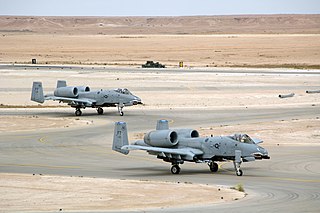
The United States Air Force's 438th Air Expeditionary Advisory Group is a provisional unit assigned to United States Air Forces Central to activate or inactivate as needed. It was last active in Al Anbar province, Iraq to provide close-air support to coalition forces in the region with Fairchild Republic A-10 Thunderbolt II aircraft. It was composed of deployed aircraft, equipment and personnel from Air Force units around the world.

The 24th Fighter-Bomber Squadron is an inactive United States Air Force unit. It was organized in February 1942 as the 24th Transport Squadron and served as a training unit for I Troop Carrier Command until disbanding in a general reorganization of Army Air Forces training units in 1944. The squadron was reconstituted in the reserves in 1949 and served until May 1951, when it was called to active duty for the Korean War. It was then inactivated, and its personnel were assigned to other units. When the reserves reactivated their operational units in 1952, it was activated as the 24th Fighter-Bomber Squadron. When the reserve fighter mission was concentrated in the Air National Guard in 1957, the squadron was inactivated and its assets transferred to elements of the 94th Troop Carrier Wing

The 25th Fighter-Bomber Squadron is an inactive United States Air Force unit. It was organized in February 1942 as the 25th Transport Squadron and served as a training unit for I Troop Carrier Command until disbanding in a general reorganization of Army Air Forces training units in 1944. The squadron was reconstituted in the reserves in 1949 and served until May 1951, when it was called to active duty for the Korean War. It was then inactivated, and its personnel were assigned to other units. When the reserves reactivated their operational units in 1952, it was activated as the 25th Fighter-Bomber Squadron. When the reserve fighter mission was concentrated in the Air National Guard in 1957, the squadron was inactivated and its assets transferred to elements of the 94th Troop Carrier Wing






















